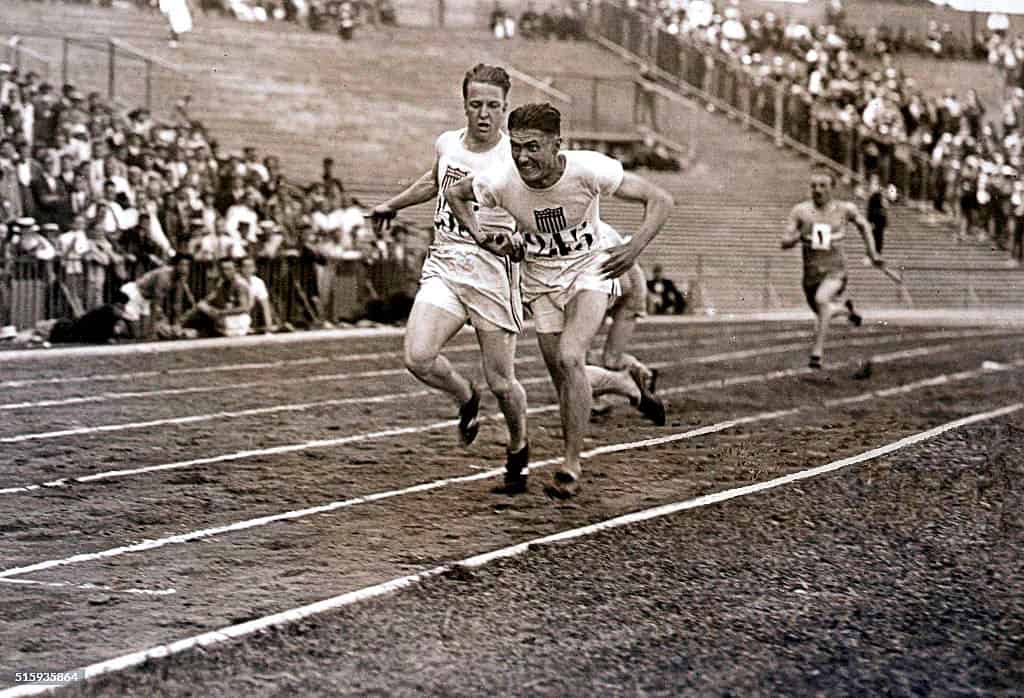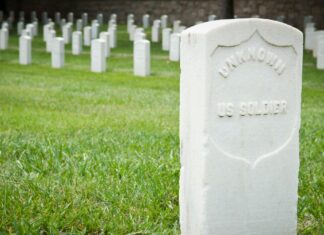
The Olympic Games Paris 2024 kicked off Friday with more than 10,000 athletes competing for the gold through Sunday, Aug. 11.
The history of the games goes back about 3,000 years to the Peloponnese in ancient Greece, according to the International Olympic Committee (IOC) website. But let’s rewind the clocks back 100 years, when Moorestown native Jeremiah Alfred LeConey won a gold medal as the anchor of the U.S. 4×100 relay team at the 1924 Summer Olympics, also in Paris.
LeConey’s win set a then-world record of 41 seconds flat in the same Olympics competition that was the setting for the 1981 film “Chariots of Fire,” according to Bill LeConey, Al’s grand nephew. A photo of LeConey in the starting stance was later used to develop a 1932 $3 cent postage stamp, issued to commemorate the Los Angeles Olympics that year.
“I think it’s important for people to remember their relatives and to know their roots,” Bill said. “Lenny Wagner (president of the Historical Society of Moorestown) gave me a great quote about that. I asked him why the Moorestown Historical Society does what they do and why it’s important to them to remember people like Al LeConey. and he said, “It’s because people need to know who they are and who they were – people in their past or in their family that made them who they are today.’
“It’s just important for people to know where they came from, and by recognizing where they came from, it gives them a better understanding of who they are and why they are today.”
LeConey was born in the family home on March 11, 1901, according to the historical society. He was described as a scrawny kid who showed little athletic ability, but excelled on the high-school track team. Within a year, LeConey ran every distance up to and including the half-mile, and even excelled in the pole vault. He won repeatedly and eventually held the county record in the 100- and 200-meter dashes and the pole vault.
LeConey attended Lafayette College in Pennsylvania, where he specialized in both the 100- and 200-yard distances. In 1922, he set a collegiate record for 100 yards in a meet at Harvard. His record time of 9.7 would stand until 1931.
LeConey also won at all the major track meets of the time: the Knights of Columbus, Penn Relays and the National AAU Championships. He was named All-American and labeled the fastest man in the East, and briefly held the world record for 100 meters.
“He had a number of records that he held, and he was just an amazing runner and considered the greatest athlete Lafayette College ever produced,” Wagner recalled of LeConey. “In fact, Lafayette still has all his stuff – they have his gold medal from the Olympics, they have his uniforms…
“If you go up there, he’s one of their Hall of Fame athletes.”

Nancy Loprete, Loren Murchison’s daughter, and Bill LeConey, grand nephew of Al LaConey, reenact the gold medal-winning baton handoff from Murchison to LeConey at the 1924 Olympics.
LeConey had failed to qualify for the Antwerp Olympics of 1920, but performed well enough at the Olympic Trials in Boston in 1924 to be named to the relay. He sailed with the rest of the U.S. team — including better-known fellow sprinters Charlie Paddock and Jackson Scholz and swimmer Johnny “Tarzan” Weissmuller of movie fame — aboard the S.S. America out of New York City in mid-June.
Rather than sulk about his absence from the individual sprints, LeConey teamed with Frank Hussey, Louis Clarke and Loren Murchison in the 400 relay, held at Colombes Stadium on July 12. In his typewritten personal memoir written in 1924, “My Most Exciting Race!” LeConey tells how Paris represented, “the climax of eight years (of) hard training and dreaming, as well as 5,000 miles of traveling.”
“It was now my move!” he wrote of receiving the handoff from Murchison for the anchor leg of their winning race. “Without turning, I could feel the forms of my opponents struggling to overcome the lead. Those few seconds were interminable, but like a faint streak, I saw the finish tape, and then felt it break across my chest. Then the time was announced.
“Our 41 seconds had broken the world’s record by one and one-fifth seconds.”
After his track career, LeConey worked as an insurance underwriter, and in 1959, he died of a heart attack at the age of 58 while working at his desk. Each year, he is remembered with the Al LeConey Memorial Race, part of the Moorestown Invitational Track Meet.
LeConey’s gold medal and other memorabilia were donated to Lafayette College by his widow, Zelda, shortly before her own death. This summer, Bill traveled to Lafayette College to see the collection, now stored in a special archive at the school’s Skillman Library.
On July 13, he met with Nancy Loprete, Murchison’s 88-year-old daughter, and her son Scott, Murchison’s grandson, at Nancy’s home in Holmdel. It was the 100th anniversary of the gold-medal race, and Loprete and Bill reenacted the handoff from Murchison to LeConey with a gold baton.
“I knew a lot about him (LeConey) and about the history of it (the 1924 Summer Olympics), but it was always interesting to uncover new things and to talk to people who didn’t know about it as well, and to dig into it a little bit more,” Bill noted.
“It was interesting to flush it out, and most of it was confirming what I already knew,” he added, “but some of the details of it I was able to dig out more, and that was very rewarding to me because I’ve always had an interest in history and sports.
“It was a labor of love to do this and to honor my family in this way.”









